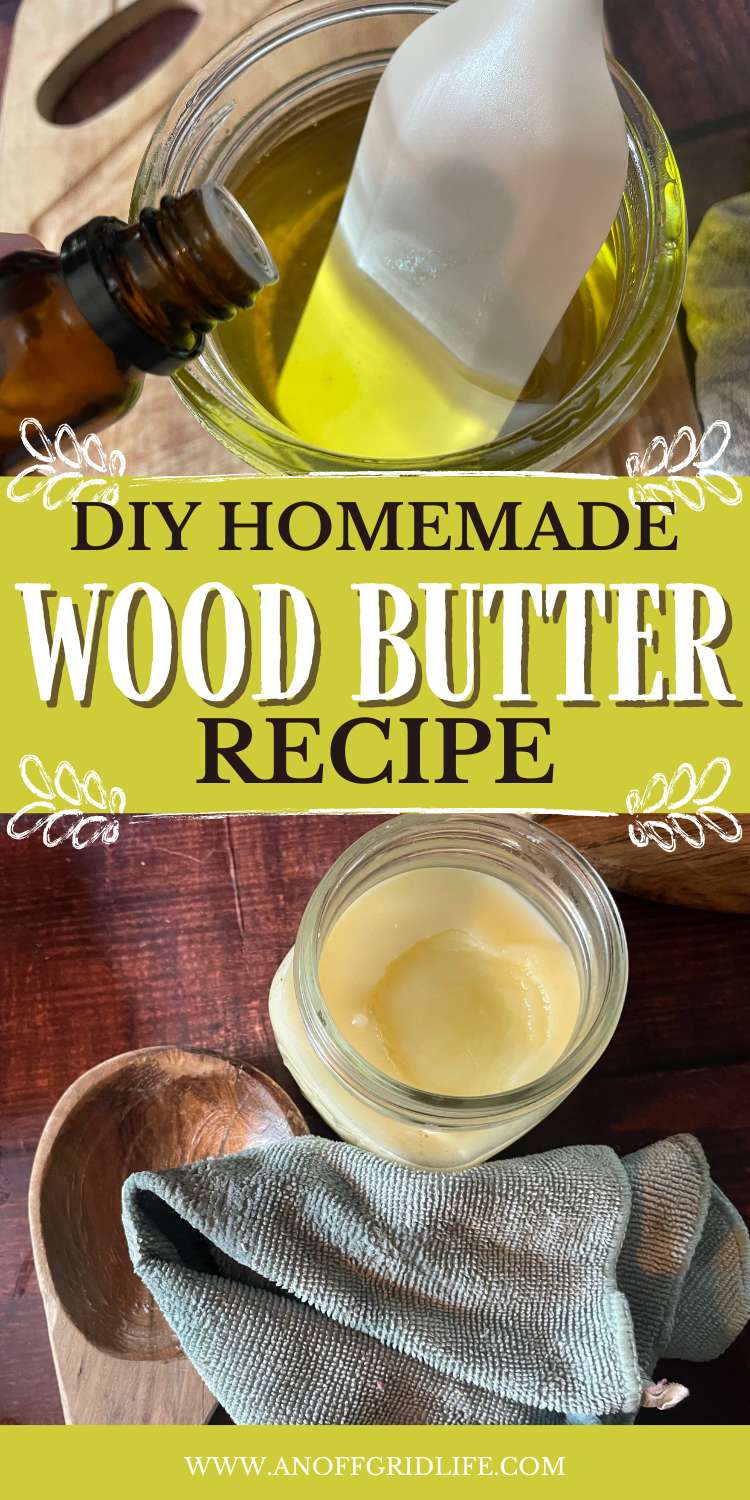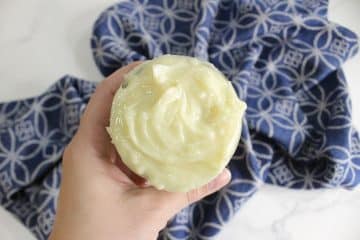Wood butter is a fantastic way to care for and preserve wooden kitchen items. Recently, I experimented with creating a wood butter recipe for our home. Read on for the story and learn how to make homemade butter to treat wood.

Estimated reading time: 8 minutes
Whether it's wooden spoons, bowls, cutting boards, or knife handles, everyday use and exposure to water can significantly shorten their lifespan. These utensils crack and deteriorate, becoming less useful over time. However, treating them with a simple and natural solution like this one prevents this damage and prolongs the life of these essential kitchen tools.
What is Wood Butter?
Wood butter is a conditioning and protective agent made from natural ingredients, specifically designed for wooden kitchenware. Sometimes called spoon butter, It infuses moisture into the wood, restoring its natural beauty and durability.
Unlike commercial and natural furniture polish and treatments, this butter typically contains food-safe ingredients. This makes it ideal for items that frequently come into contact with food.
The main ingredients in this wood butter recipe include a combination of natural oils and beeswax. The oils penetrate the wood, providing moisture and preventing drying and cracking.
Then, beeswax adds a protective layer on the surface. It seals in the oils and gives the finish a smooth, lustrous finish.
⬇️Want the printable recipe card? It's at the bottom of this post.⬇️
The Story Behind Our Butter
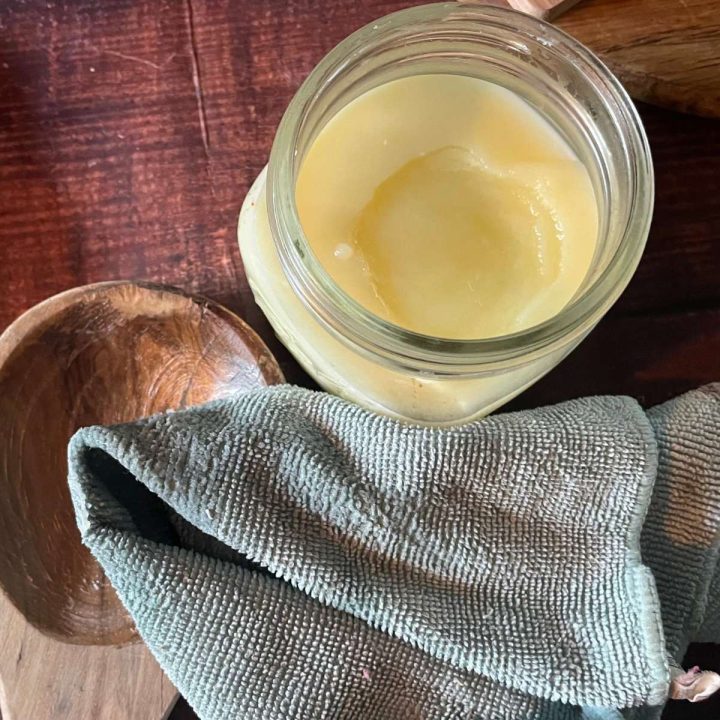
Dan and I have always loved antique furniture, country living and old furniture pieces. As we get older, we're both becoming more interested in reviving the old, repairing the beautiful, and learning the ways of old artisans.
Most of our home's furniture pieces have a past life. Some were passed down by our parents, and others came from farm auctions, free listings online, or thrift shops.
Yet each has its own unique tale. And now they're like old friends.
For instance, our kitchen table – a massive oak table that seats 14 people- had been tucked away in a dim storage unit for years, gathering dust and memories, before Dan stumbled upon it.
When we first saw it, it was dusty and greasy. Yet Dan saw its potential as a centerpiece for our family's gatherings.
The surface was pretty gross, coated with the remnants of its storage days. But it was perfect for our large country kitchen.
So, we started looking through our old magazines and books about natural wood treatments.
Then, the girls and I rolled up our sleeves and got to work on creating a recipe for homemade wood butter.
Note: in hindsight, making the butter for a massive table was, well, a massive undertaking. But the wood butter recipe worked so well that I keep a jar for our wooden spoons and the wooden island in our kitchen - a "free to us" piece made from salvaged Saskatchewan barnwood.
Wood Butter vs. Furniture Polish
Wood butter and furniture polish are different. Here's how.
Ingredients
Wood butter uses natural, food-safe ingredients, whereas commercial furniture polish often contains chemicals and synthetic substances.
Application
Wood butter is ideal for items frequently exposed to food, while furniture polish is better suited for decorative wooden items.
Effectiveness
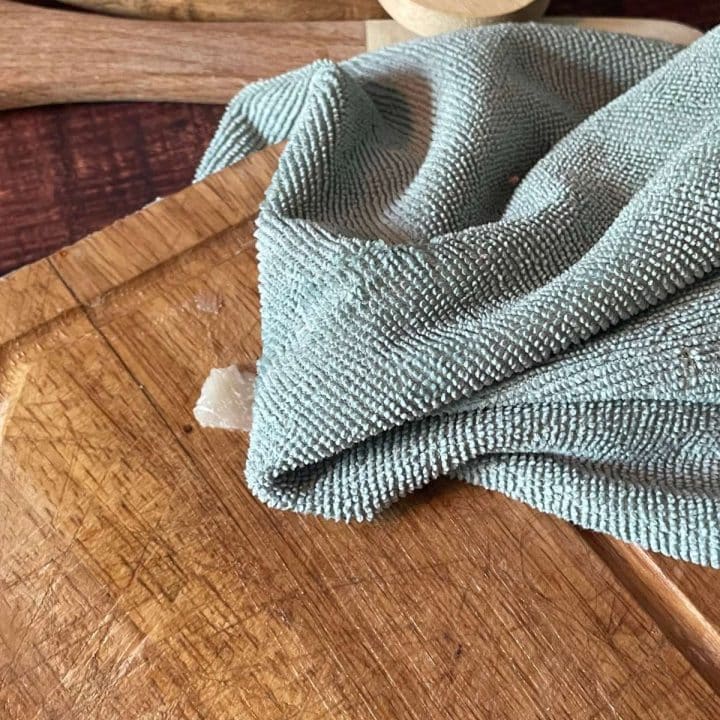
Wood butter provides deep conditioning. Furniture polish often focuses more on surface-level shine.
Safety
Wood butter is generally safer for kitchens because it's natural. So if you, your kids, grandkids or pets ingest some, you're less likely to need immediate medical attention. That said, don't go eating it.
Making your own wood butter is cost-effective and ensures that you know exactly what's going into the product you're applying to your kitchenware.
Making Homemade Wood Butter
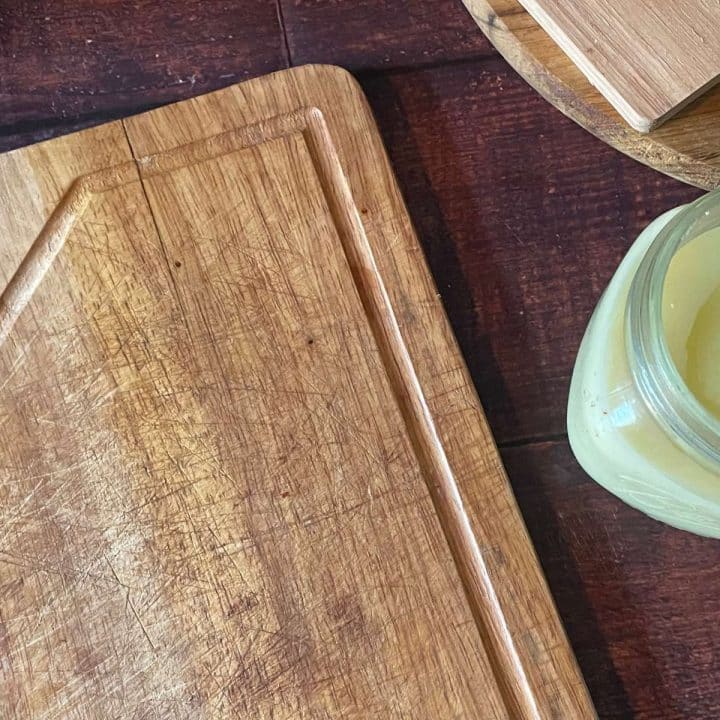
Our decision to make butter for wood goes hand in hand with our family's off grid lifestyle.
I'm on a mission to reduce the chemicals in our home. And, honestly, this is kind of a new thing for me. If you've followed our family's story, you know I was a financial advisor near Toronto for many years before we moved to our off grid homestead in the Canadian subarctic.
Plus, making our own household cleaners like the pine needle vinegar cleaner and our homemade toilet bombs makes me feel good. It means we're not contributing to the never-ending cycle of "buy and throw away. "
Making our own natural and eco-friendly household items goes hand in hand with my journey to a more self-reliant and simpler lifestyle, too.
Recipe for DIY Wood Butter
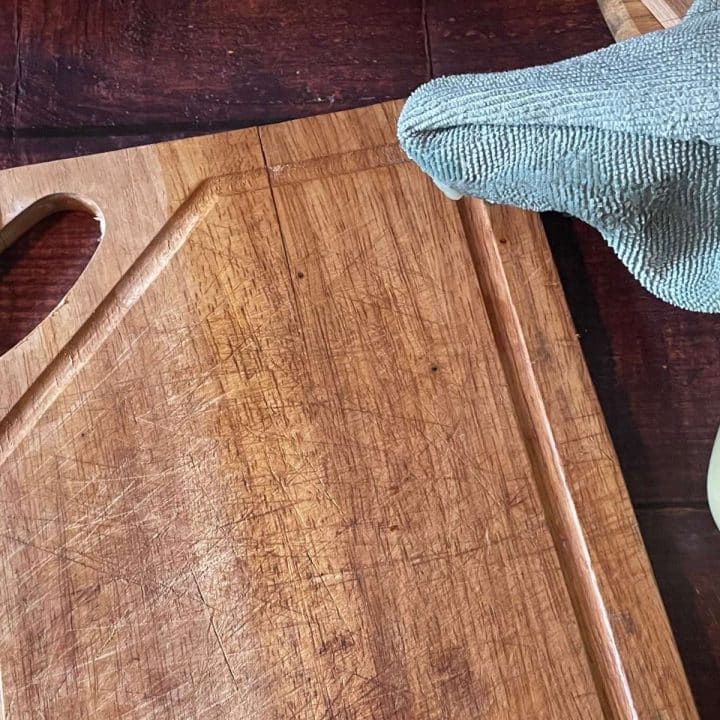
You'll need a few ingredients to make your own wood butter. If you've made any of our lip balms or soap recipes, chances are you already have these items on hand.
Ingredients for DIY Wood Butter
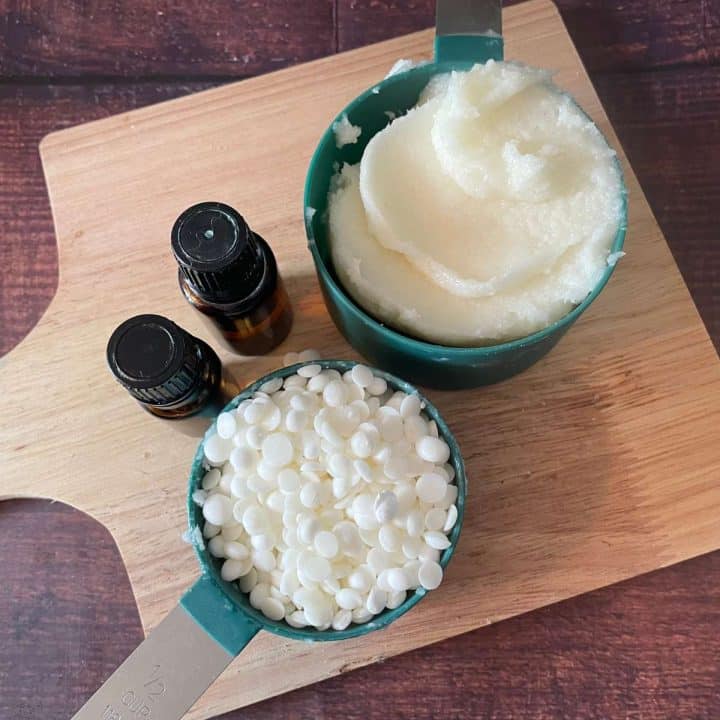
- 1 cup Coconut oil
- ⅓ cup Beeswax Pellets
- 8 drops of Rosemary essential oil
- 6 drops of Lemon essential oil
Directions
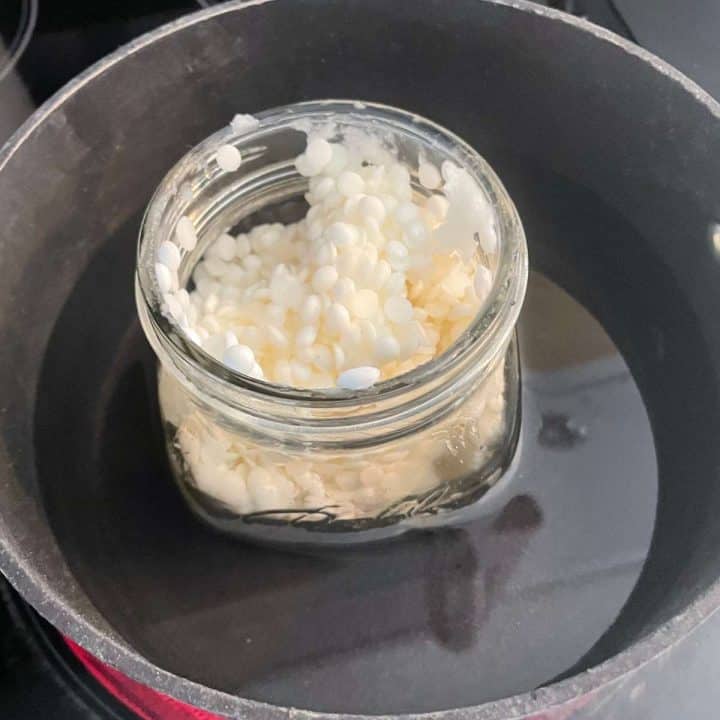

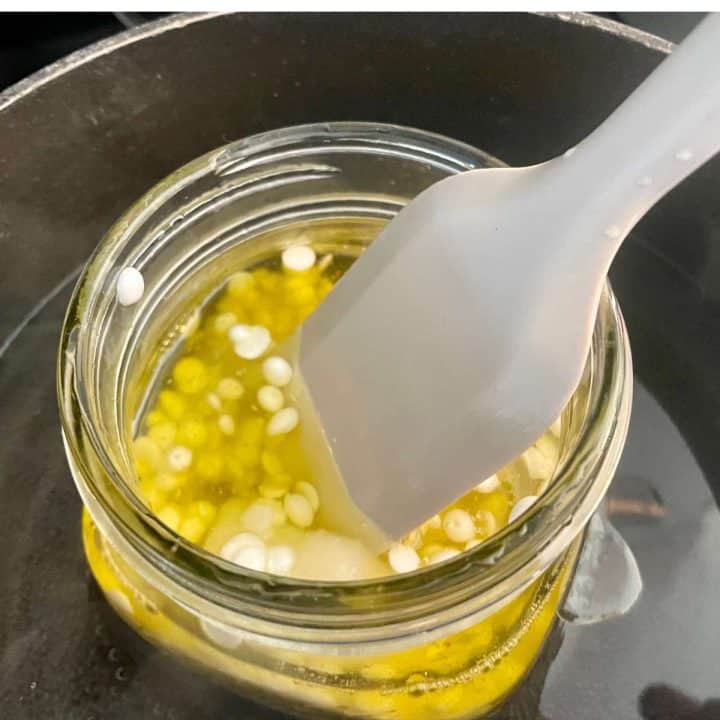
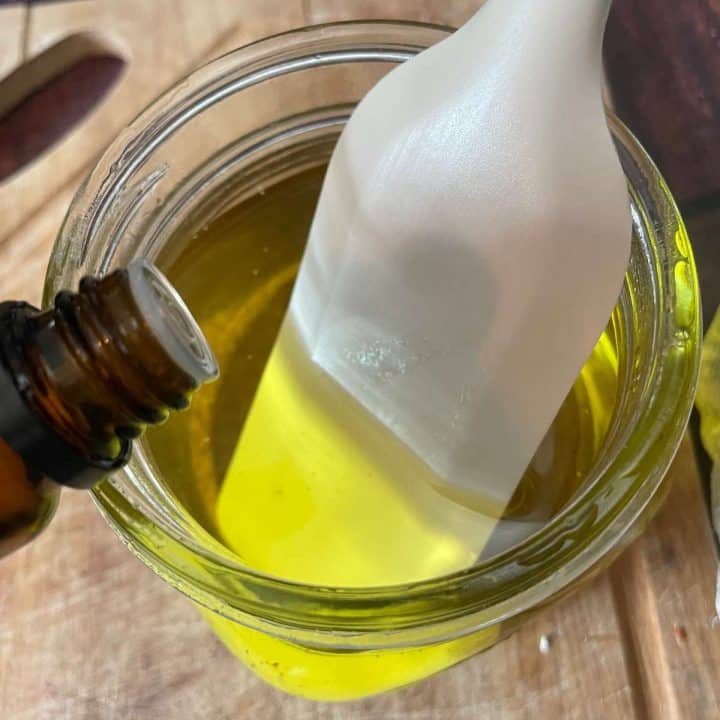
Follow these steps to make your wood butter recipe. This is a great hands-on homeschool project for older kids, too.
1. Combine the coconut oil and beeswax pellets in a heat-safe jar.
2. Heat in the microwave in 30-second increments until melted, or place the jar in a pan of water and heat until just melted.
3. Remove from heat and stir in the essential oils until well combined.
4. Allow the mixture to cool completely until solid.
5. Store in a cool, dark place.
How to Use Wood Butter
- Rub a generous amount into your wooden item using a clean, soft cloth.
- Buff it in until it is mostly absorbed.
- Let the wood sit overnight to absorb as much of the wood butter as possible.
- Wipe off any excess the following day.
Wood Butter Recipe FAQs
I know you have questions. And I have answers!
How Often Should I Apply Wood Butter?
You should apply wood butter to your wooden kitchen items when they look dry or dull. Conditioning every two to three months is ideal for items used daily.
Can I Use Wood Butter on Other Types of Wood?
Yes, wood butter is suitable for all types of untreated wood. It's particularly effective on items that are used and washed frequently.
What Are the Benefits of Using Essential Oils in Wood Butter?
Essential oils like rosemary and lemon add a pleasant fragrance and have natural antibacterial properties, making them beneficial for use on kitchen items.
Making and using your wood butter is simple. It's a natural way to care for your wooden kitchenware, wooden countertops, and even tables. Regularly conditioning your kitchen items with this easy-to-make mixture'll extend their lifespan and maintain their beauty.
Like this post? Save it, share it, and read it!
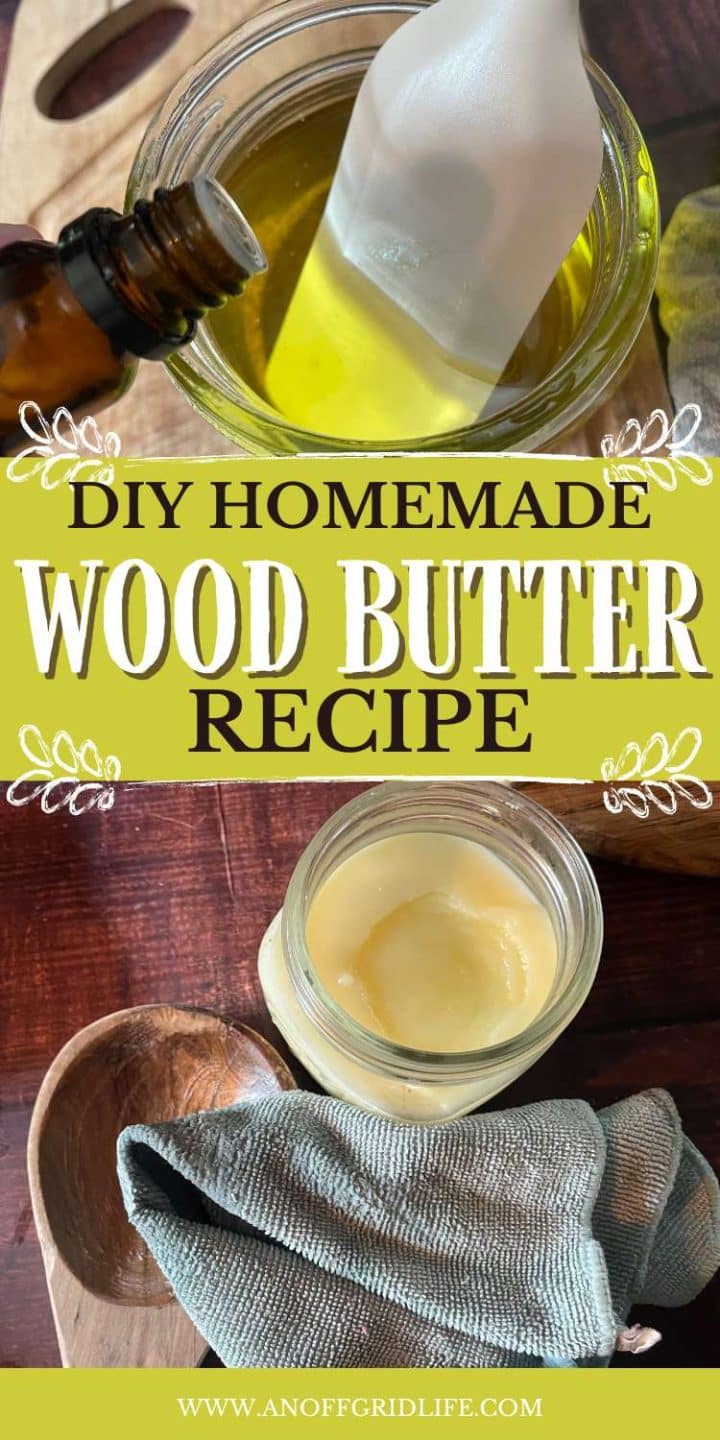

How to Make DIY Wood Butter Recipe
Make this three-ingredient all-natural wood butter recipe at home.
Materials
- 1 cup Coconut oil
- ⅓ cup Beeswax Pellets
- 8 drops of Rosemary essential oil
- 6 drops of Lemon essential oil
Tools
- Measuring cup
- Measuring spoons
- Wooden spatula
- Small mason jars
Instructions
- Place coconut oil and beeswax pellets in a heat-safe small jar, like the one you will store it in to save cleaning up extra dishes.
- Heat in the microwave in 30-second increments until melted or you can place the jar in a pan with water only halfway up the sides of the jar and heat over medium until just melted.
- Remove from heat and stir in essential oils until well combined.
- Allow the mixture to cool completely until solid.
- Store in a cool dark place.
Notes
To use: Rub a generous amount into your wooden spoon or cutting board with a clean soft cloth. Buffing it in until it is mostly absorbed. Allow the wood to sit overnight to absorb as much of the wood butter as possible. The next morning, wipe off any excess.
Recommended Products
As an Amazon Associate and member of other affiliate programs, I earn from qualifying purchases.


